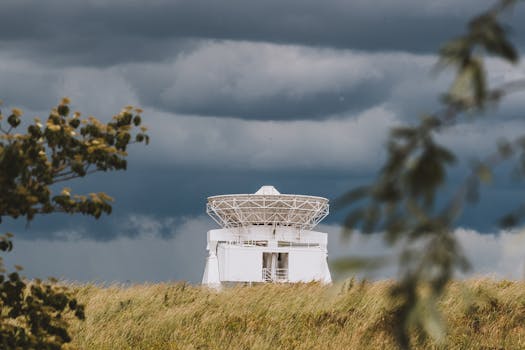GEO Satellites: Enhancing Global Communication and Navigation
GEO satellites, or Geostationary Earth Orbit satellites, are a type of satellite that orbits the Earth at an altitude of approximately 36,000 kilometers, remaining stationary relative to a fixed point on the equator. This unique characteristic allows GEO satellites to provide continuous coverage of a specific region, making them ideal for a variety of applications, including television broadcasting, telecommunications, and weather forecasting.
GEO satellites have been in use for several decades, with the first GEO satellite, Syncom 2, launched in 1963. Since then, the technology has evolved significantly, with modern GEO satellites offering increased capacity, improved performance, and enhanced functionality. Today, there are hundreds of GEO satellites in orbit, providing a wide range of services that are essential to modern life.
Applications of GEO Satellites
GEO satellites have a wide range of applications, including television broadcasting, telecommunications, weather forecasting, and navigation. Television broadcasting is one of the most common applications of GEO satellites, with many satellites providing direct-to-home television services, allowing people to receive hundreds of channels from around the world. Telecommunications is another significant application, with GEO satellites providing broadband internet, mobile connectivity, and voice services to remote and underserved areas.
Weather forecasting is also an important application of GEO satellites, with satellites such as GOES-16 and Himawari-8 providing high-resolution images of the Earth’s atmosphere, allowing meteorologists to track weather patterns and predict severe weather events. Navigation is another critical application, with GEO satellites providing location-based services, such as GPS, which is used in a wide range of applications, including aviation, maritime, and land transportation.
Benefits of GEO Satellites
GEO satellites offer several benefits, including global coverage, high bandwidth, and reliability. Global coverage is one of the primary benefits of GEO satellites, allowing them to provide services to a wide range of users, regardless of their location. High bandwidth is another significant benefit, enabling GEO satellites to transmit large amounts of data, including high-definition video and broadband internet. Reliability is also a critical benefit, with GEO satellites providing continuous services, even in the most remote and underserved areas.
In addition to these benefits, GEO satellites also offer several economic and social benefits. For example, they provide employment opportunities in the satellite industry, stimulate economic growth, and improve living standards. They also enable the provision of essential services, such as healthcare, education, and emergency services, to remote and underserved areas.
Challenges and Limitations of GEO Satellites
Despite the many benefits of GEO satellites, there are also several challenges and limitations. One of the primary challenges is the high cost of launching and maintaining GEO satellites, which can be prohibitively expensive for some organizations. Another challenge is the limited availability of orbital slots, which can lead to congestion and interference. The risk of satellite failure is also a significant concern, as it can result in the loss of critical services and significant economic losses.
In addition to these challenges, GEO satellites also face several regulatory and environmental challenges. For example, there are strict regulations governing the use of orbital slots, and the disposal of satellites at the end of their life is a significant environmental concern. The increasing amount of space debris in Earth’s orbit is also a significant challenge, as it can pose a risk to the operation of GEO satellites and other space-based systems.
